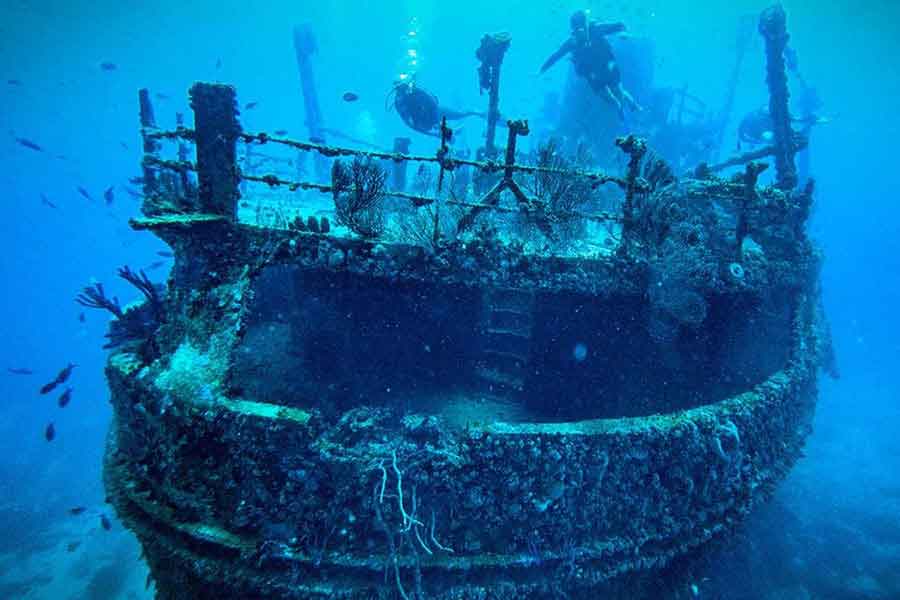
Shipwrecks are often referred to as dead ships, ships lying at the bottom, far from life, far from the waves they used to ride.
Nothing could be further from the truth. Naufrágios become excellent homes for millions of fish that find their housing solution with each new sunken ship. They are benthic fish that feed on the bottom (benthos), many of which spend a significant amount of time inside their caves, protected from predators.
A shipwrecks then becomes an exceptional residential complex. Schools of fish roam the hold, lobsters seek refuge under the crumbling hull, an octopus takes charge of the helm. The ship quickly fills up with tenants. The possibility of reproduction is increased, and when a fish dies, it decomposes inside the ship, distributing detritus that will feed the worms, which in turn become the basic food for all.
Meanwhile, predators (pelagic) will circle the shipwrecks in search of a new victim to feast on. Corals, sponges, and algae will find a solid foundation to settle on. Slowly, the metal will disappear under a blanket of life, and the shipwrecks will inevitably transform into the sea.
Many countries around the world choose to get rid of dilapidated shipwrecks by sinking them in shallow waters. This also attracts a new underwater species: divers who will explore its corridors in search of a new adventure. This increases tourism in the area. A sunken ship is not far from life but rather very close to it.
I never understood why they are called «dead ships» when they have never been so full of life.
«You cannot defend what you do not love, and you cannot love what you do not know.»

